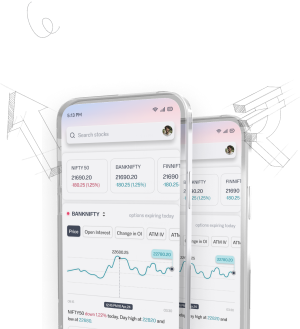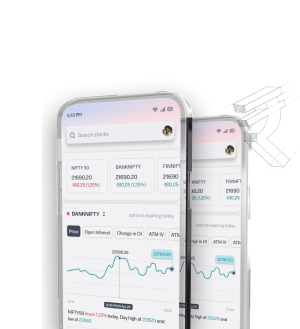Williams %R: A momentum oscillator, Larry Williams, for reading overbought and oversold conditions.
The Williams %R is a momentum indicator developed by Larry Williams. It will help you identify overbought and oversold conditions in markets like the very active Indian market. When to buy or sell depends on our trading plans, and it is essential for traders to understand how the Williams %R works. It expresses the market trends, thus making it useful for effective trade.
Main Points
This indicator oscillates between zero and -100, clearly showing the market's conditions. Overbought if reading is above -20 and oversold if reading is below -80. The Williams %R formula is read as follows: Williams %R = (Highest High – Close) / (Highest High – Lowest Low).
- This oscillator could also be used to draw attention to possible turns within markets.
We typically look for crossovers at −80 and −20 as trend change indicators.
What is Williams %R?
Williams %R is one of the most important momentum indicators. Its scale runs from 0 to 100 and helps traders identify when markets are either too high or too low. This indicator measures an asset's closing price and whether high or low over 14 days. It is among the tools of technical analysis that traders use. It advises them when prices are too high or low. Levels above -20 indicate prices are too high; those below -80 are too low. These levels tend to predict market changes. The Williams %R indicator is useful in identifying trade opportunities, whether swing trading, day trading, or investing for the long haul. This is, however a lagging indicator. So, traders use this with other tools to make better decisions. Significant levels: -50 indicates a potential price move. Remember, Williams's %R does not predict price direction or strength; using it with other tools helps trading, especially in markets like India.
| Feature | Description |
|---|---|
| Oscillation Range | 0 to –100 |
| Overbought Level | Above -20 |
| Oversold Level | Below -80 |
| Normal Lookback Time | 14 days |
| Crossover Signal Level | -50 |
The Williams %R is a momentum indicator developed by Larry Williams. It will be helpful in finding the overbought and oversold conditions prevailing in markets like the very active Indian market. When to buy or sell depends on our trading plans, and it is very essential for traders to understand how the Williams %R works. It expresses the trends of the market, thus useful for effective trade.
Main Points
This indicator oscillates between zero and -100, clearly showing the market's conditions. Overbought if reading is above -20 and oversold if reading is below -80. The Williams %R formula is read as follows: Williams %R = (Highest High – Close) / (Highest High – Lowest Low).
- This oscillator could also be used to draw attention to possible turns within markets.
We typically look for crossovers at −80 and −20 as trend change indicators.
What is Williams %R?
Williams %R is one of the most essential momentum indicators that help traders identify when markets are too high or too low. Its scale runs from 0 to 100. This indicator measures an asset's closing price as well as its high and low over 14 days. It is among the tools of technical analysis that traders use. It advises them when prices are too high or low. Levels above -20 indicate prices are too high; those below -80 are too low. These levels tend to predict market changes. The Williams %R indicator is useful in identifying trade opportunities, whether it's swing trading, day trading, or investing for the long haul. This is, however a lagging indicator. So, traders use this with other tools to make better decisions. Significant levels: -50 indicates a potential price move. Remember, Williams's %R does not predict price direction or strength; using it with other tools helps trading, especially in markets like India.
| Condition | Williams %R Value | Trading Action |
|---|---|---|
| Overbought | Above -20 | Consider Selling |
| Oversold | Below -80 | Consider Buying |
| Bullish Divergence | Lower Lows in Price & Higher Lows in %R | Seek Buying Opportunities |
| Bearish Divergence | Higher Highs in Price and Lower Highs in %R | Seek Selling Opportunity |
The difference between Williams %R and other oscillators.
Viewing momentum oscillators will help us understand how all these tools work. Williams %R and the Fast Stochastic Oscillator help define the market trend. They give you two sides of the market. Looking at Williams %R and the Fast Stochastic Oscillator Williams's %R varies between 0 and –100. It shows oversold as –80 and overbought as –20; it focuses on the extent from the closing price to the highest in the past 14 days.
The tool becomes more responsive and shows larger price changes.
The Fast Stochastic Oscillator also ranges from 0 to 100. It measures the closing price relative to the highest and lowest prices over a specified period. It displays two lines: %K represents present prices, while %D gives a smoother look at variations.
They mobilize 20 and 80 to show when prices are too high or too low. However, Williams's %R is more effective in finding when the indicator and price do not match, which may be where a price change comes from. Traders pick which one they'll use by the way they trade. Knowing the differences helps us do so appropriately. It assists in improving our ability to observe market trends and signals.
Limitations of Using Williams %R
The Williams %R indicator helps traders. Most of us have used it to see how the market does. Still, we need to learn its limitations for a proper trading plan. These limits help us deal with fluctuating markets.
Anomalies in Confirmation of Trends
One main failure of the Williams %R is that it does not help confirm the trend; it needs fixing in trending markets. To understand this clearly, if the price action keeps going in one direction, the indicator would provide an absolutely too-early overbought or oversold reading. This can lead a trader to avoid good trades or even exit a trade too early. Thus, this is when the Williams %R needs to be considered in a broader market context. False Signal and Market Condition
Another major issue is the receipt of false signals. Williams's %R changes quite significantly, especially in volatile markets. It can rapidly produce several buy and sell signals, making it difficult to tell which to follow.
We lost money with the indicator alone. Hence, we should use it with other tools to analyze better. That will avoid terrible trades and improve our trading.
Conclude
This indicator is very helpful in tracking the market trend. It will show whether the market is overvalued or undervalued. With values between 0 and -100, we can see where the market has changed.
Values above -20 indicate that the market is too high, while values below -80 are too low. This gives us helpful preparation for better trading plans. Williams %R will advise us of a good time to buy and to sell, though we cannot rely on the signs completely. It is better to use it when combined with more suitable tools and planned carefully in each action. It is, therefore quite helpful to understand and know how to use the Williams % R. Using this tool in trading plans helps make more effective decisions in the marketplace.
FAQ's
What is Williams' %R indicator used for?
The Williams %R indicator reflects the overadequacy or inadequacy of the market. It will help a trader make good decisions.
The Williams %R is calculated as follows:
Determine Williams %R: Williams %R = - 100 x ( the Highest High - Close) / ( the Highest High - the Lowest Low), during the last 14 days.
What do the Williams %R levels mean?
Levels above -20 suggest that the market is too high and may go lower. Levels below -80 suggest that it is too low and may rise.
This indicator can be used in conjunction with other indicators.
Yes! Using Williams %R in combination with other tools, like Moving Averages, can help us prepare effective and useful trading plans.
What is the limitation of the Williams %R Indicator? Confirming trends becomes challenging in fast markets and may even produce false signals. This can frequently result in wasting positive trading opportunities.
We can find the divergence signals with Williams %R as follows:
In divergence, the price goes one way but Williams %R goes the opposite. In itself, this is a signal that a price move is likely to occur, and very much to our aim.
It is not suitable for all types of trading. Williams %R is versatile but must blend with our trading style. For optimum effectiveness, it performs well with other tools coupled with risk management.
Disclaimer
The content provided is for educational purposes only and does not constitute financial advice. For full details, refer to the disclaimer document.


